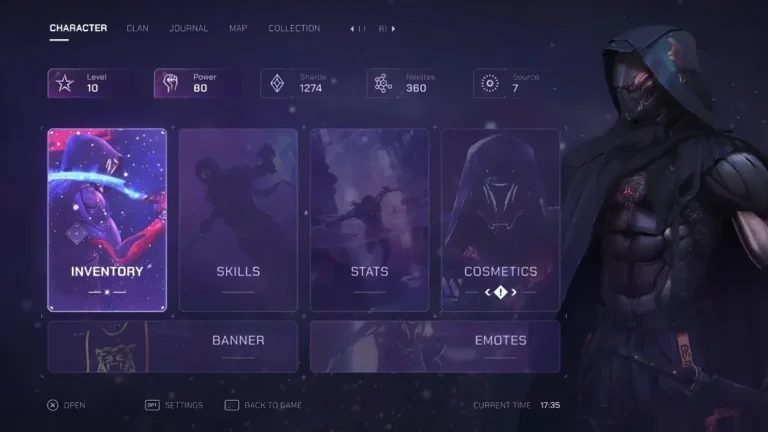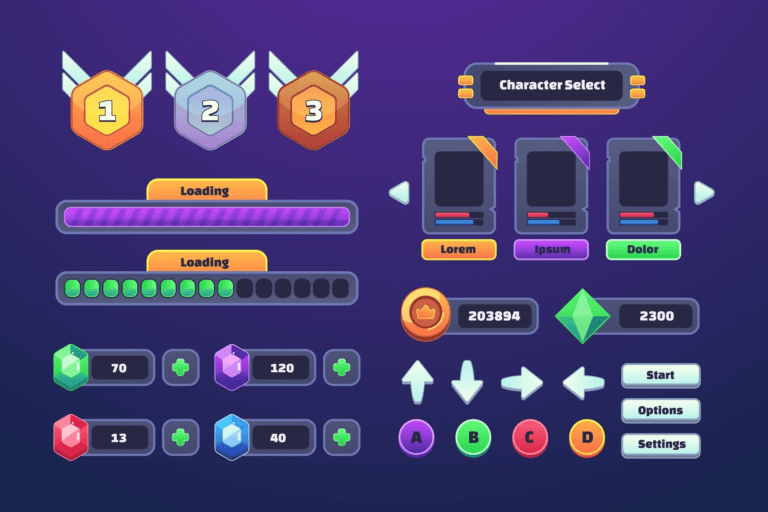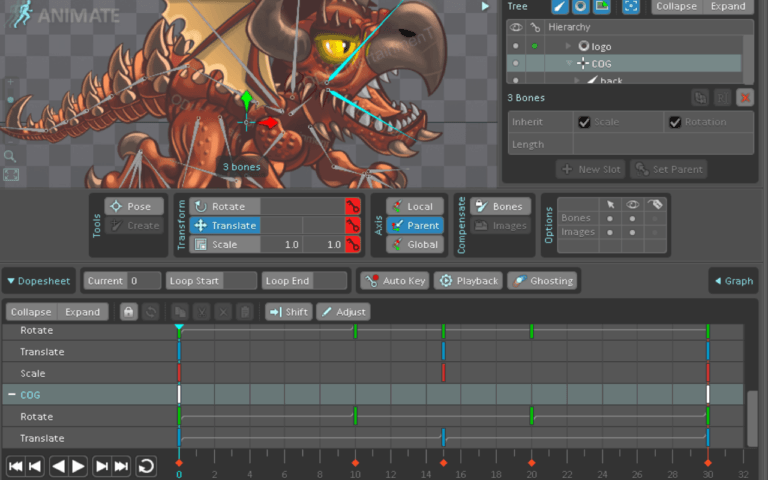Mobile game ads have evolved from intrusive static banners with limited targeting to engaging formats like rewarded videos, interactive ads, and playable ads. Modern ads are more seamlessly integrated into the gaming experience, providing rewards for interaction and utilizing advanced analytics for better targeting.
Can you remember a time when mobile gaming was just a niche hobby? When those chunky Nokia phones could barely run Snake? My, how times have changed. The mobile gaming industry has undergone a meteoric rise, exploding from a niche market into a multibillion-dollar behemoth.
As smartphones and tablets found their way into every pocket and purse, developers quickly realized the huge potential to reach vast audiences through these ever-present devices. Enter mobile game advertising – the critical revenue stream that turbocharged the industry’s rapid expansion.


Need Game Art Services?
Visit our Game Art Service page to see how we can help bring your ideas to life!
The Early Days of Game Ads
But let’s rewind to the early days of mobile game ads. What were they like back then? Rudimentary, to say the least. We’re talking basic banner ads and text-based promotions that, let’s be honest, did little to capture players’ attention or deliver truly engaging experiences. It was like trying to sell a sports car by showing a picture of the cupholder.
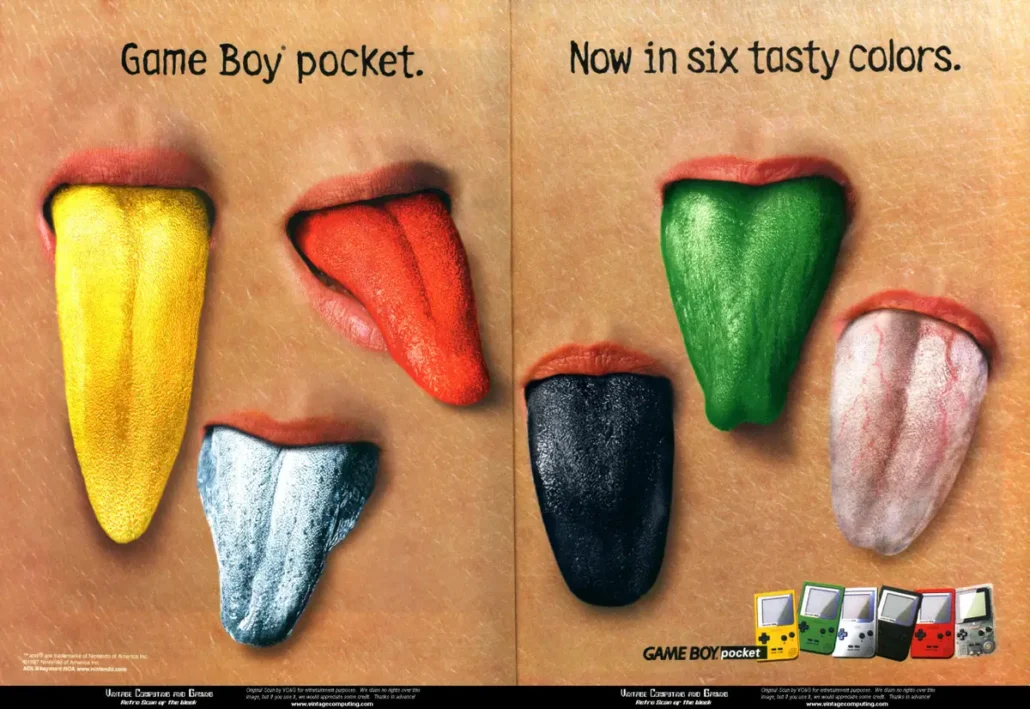
Developers faced a delicate balancing act: monetization vs. user experience. Intrusive ads made money, sure, but they also risked alienating players and disrupting that oh-so-important gameplay. Remember when ads would pop up mid-level in Candy Crush, making you accidentally swap those precious candies? That conflict highlighted the pressing need for ad formats that could seamlessly blend into the mobile gaming experience.
While the ads were basic, the stage was being set for change. Companies like AdMob (later scooped up by Google) and Vungle pioneered ad networks and tracking tech, paving the way for more sophisticated ad delivery mechanisms. If you’re interested in finding out about various formats of ads, please refer to our article about game ad monetization.
The Evolution of Ad Formats
As the industry matured, a lightbulb went off for developers and advertisers: user experience is king. Cue the development of ad formats designed to enhance engagement rather than be disruptive party crashers.
Banner ads stuck around, but their design and placement evolved to be less intrusive – think strategically placed, right-sized, and contextually relevant. It was a banner ad glow-up. Interstitial ads, those full-screen beauties that appear between game sessions or levels, struck a balance by capitalizing on natural breaks in gameplay for high visibility without constant interruption.

Then came the game-changers: rewarded ads and playable ads. Rewarded ads allowed players to earn in-game rewards by watching ads or engaging with them – a win-win for devs and players. And playable ads? Sheer genius! Letting players experience a bite-sized game demo before downloading? Talk about boosting engagement and conversion rates.
As mobile devices became more powerful, video ads had their glo-up moment. Cinematic trailers and gameplay previews suddenly looked slick as can be on those high-res displays, letting advertisers leverage immersive storytelling to hook players.
The Role of Tech and User Preferences
Of course, none of these advertising evolutions would have been possible without some key technological advancements. Faster processors, larger displays, and higher-speed internet meant richer, more engaging ad experiences – from high-def video to seamless interactive formats. As Samsung, Apple, and others released shiny new devices, the creative possibilities for advertisers expanded.
Data analytics and machine learning also played a major role, enabling highly targeted and relevant ad delivery to specific user segments. Personalization was no longer a luxury – it became an expectation. If you’re a FIFA player, you probably don’t want ads for Roblox dress-up games, right?

But tech alone doesn’t dictate success. As users became more discerning, the demand for authenticity in advertising skyrocketed. Cue the rise of user-generated content and influencer collaborations. After all, who better to authentically promote a mobile game than…actual players and trusted content creators? Brands like Wargaming teamed up with mega YouTube influencers to market their mobile titles.
Empowering players with options like adjusting ad frequency and opt-out controls was also key, giving users a voice in shaping their overall ad experience. Nobody wants to feel trapped in a hell with ads as their tormentors!
Rise of the Fake Mobile Game Ads
However, one disturbing trend that emerged was the proliferation of fake or misleading advertising. Some mobile game ads promised gameplay experiences that didn’t accurately represent the actual game. This deceptive advertising drew plenty of criticism and backlash.
In one high-profile example, the developers behind hit games like Gardenscapes and Homescapes by Playrix had their ads banned from platforms like Instagram and Facebook for being misleading. But they found a loophole – adding short sequences of actual gameplay footage, albeit largely unrelated to the core gaming experience advertised.
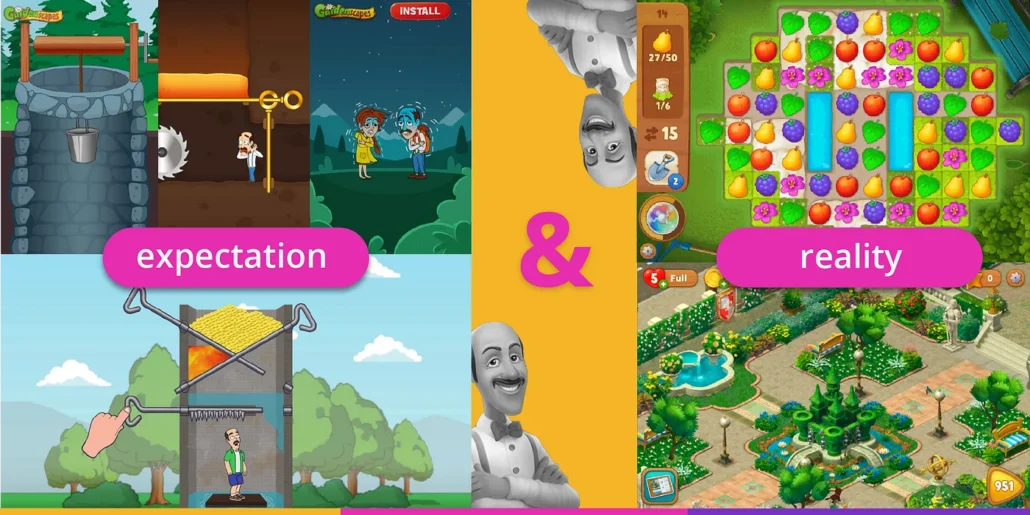
So while the ads may have included snippets to technically comply with guidelines, they still relied heavily on exaggerated, unrealistic scenarios to draw players in. This grey area tactic Let the developer’s fake ads live on, much to the frustration of duped players.
This rise of misleading and fake ads, while lucrative for some, posed a threat to consumer trust in mobile game advertising overall. It became yet another balance to strike between responsible monetization and a race to the bottom.
Current Challenges and Opportunities (2024)
While mobile game advertising has come a long way, developers today still face their fair share of challenges to overcome and opportunities to capitalize on. Understanding these will be crucial for implementing effective ad strategies that drive monetization without sacrificing user experience.
One persistent challenge is combating ad fatigue and preventing player churn. Let’s face it – we’ve all experienced that frustration of being pummeled with ads when trying to immerse ourselves in gameplay. When ads are excessive, poorly timed, or disruptive, they can quickly disengage and alienate players. This not only puts your hard-earned installs at risk but can also numb users to advertising altogether.
Maintaining an ideal ad cadence and delivering a seamless, non-intrusive experience requires careful planning. Perhaps it’s restricting ad delivery to natural breaks in the action or thoughtfully placing them in menus/loading screens. Or using rewarded video as a rewarding opt-in experience. Techniques like these show players you respect and value their time.
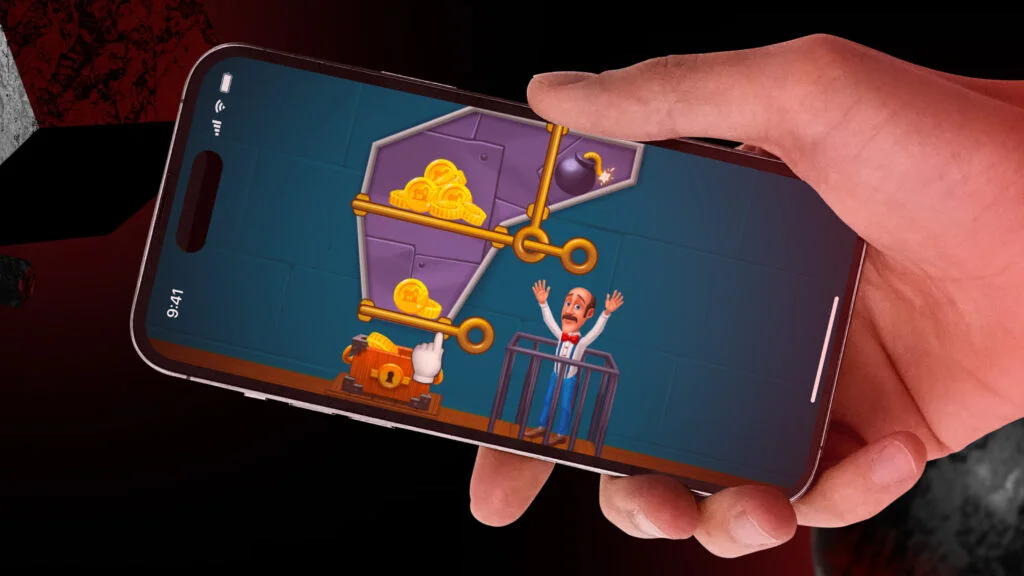
The key is to think like a player but make decisions like a designer.
Upholding ad quality and relevance is also paramount. Bombardment with irrelevant, low-quality ads is the quickest way to break immersion and discourage players. Take the time to curate and vet ad content that contextually complements your game’s genre, themes, and audience. Don’t let misaligned promotions cheapen all your hard work.
But within these challenges lie enormous opportunities for monetization if you approach it intelligently. First and foremost – you’re sitting on a gold mine of first-party data about your players’ behaviors, sessions, progress, and interests. By leveraging this data responsibility through user segmentation and predictive analytics, you can vastly improve ad relevance and timing for hyper-targeted experiences.
For example, if you notice a segment spends more time in particular game modes, you can prioritize showcasing ads relevant to those experiences at optimal breaks. Or for whales who make plenty of IAPs, you may ease up on ads in general once they’ve committed money to your game. It’s about treating players as individuals.
There are also opportunities to get creative and experiment with new ad formats as they emerge. Playable ads have proven massively successful in driving installs by letting players lubricate the funnel with a free demo. Augmented reality ads that gamify the experience are also on the horizon as the tech goes mainstream.
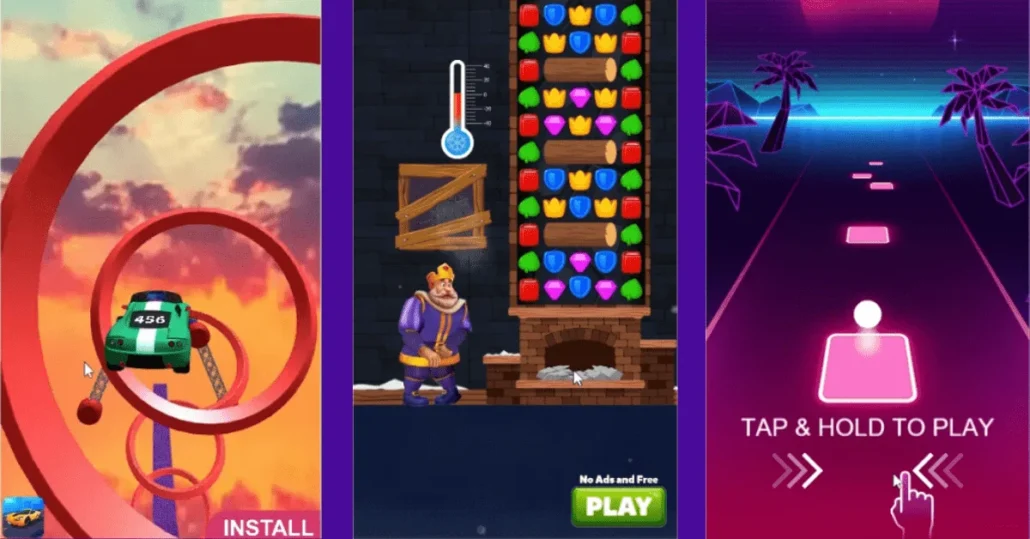
It’s an exciting time of potential accompanied by ample navigational hurdles. Those developers who can strike a balance between fresh, innovative ad strategies while maintaining player-first core values will be poised to thrive. Delivering ad experiences that feel like complimentary bonuses rather than disruptions is the ultimate goal.
Read More: Game Art Localization
The Future Frontier
But this industry never stops evolving, does it? Emerging technologies and shifting consumer behaviors mean the future of mobile game advertising will be anything but stale.
AI and machine learning are poised to revolutionize ad placement through predictive modeling that optimizes delivery based on real-time user behavior analysis. Imagine if ads could accurately anticipate the perfect moment to appear without ever disrupting that intense boss battle level you’re stuck on.
Then there’s the meta-verse-level immersion enabled by augmented reality (AR) and virtual reality (VR) tech. As these experiences blend our physical and digital realities, ads have a chance to integrate seamlessly into our actual surroundings through AR. Or fully transport us into branded virtual playgrounds through VR. It’s like stepping into an interactive ad dimension.
Takeaway
As these innovations rush toward us, ethical advertising practices become even more crucial. Balancing profit motives with genuine player welfare, transparent practices, and personal privacy will separate the leaders from the followers. Industry players who will continue to use the shady bait-and-switch tactics are getting less relevant by the day.
And above all, listening to the gaming community is what will solidify success. Maintaining open dialogue, incorporating feedback, and iterating means ads evolve in step with what players actually want. Not just what brands want to sell.
The journey of mobile game advertising has been one of relentless reinvention – from simplistic beginnings to the richly immersive experiences of today and the mind-bending possibilities of tomorrow. As this evolution accelerates, the winners will be the ones who can ride technology’s leading edge while keeping players’ interests as their true north star. Are you ready to level up?



